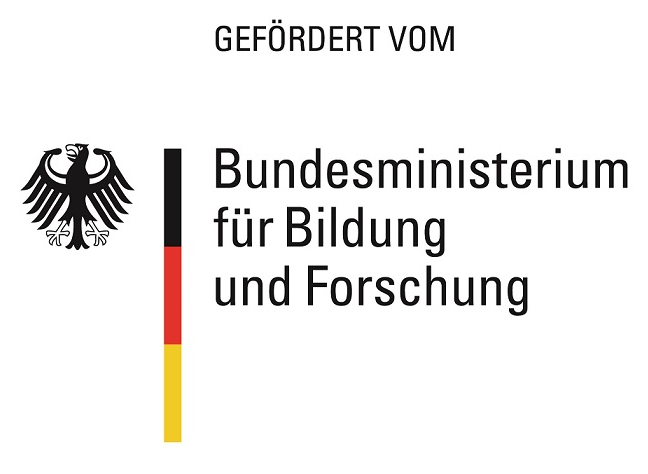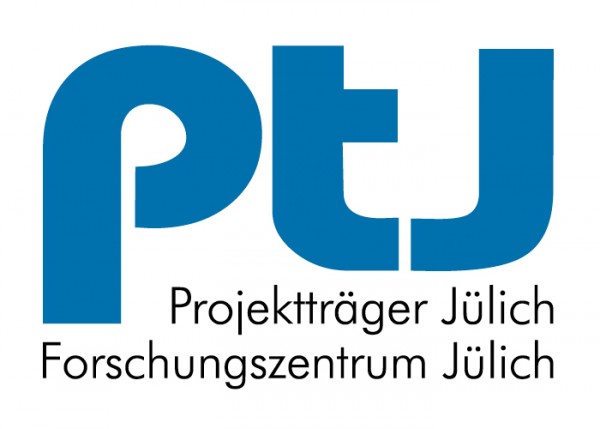Veröffentlichungen
| [1] | Kopp, A.; Niedermaier, J.; Bold, B.; Holl, K.; Bernthaler, T. & Schneider, G. (2019), „Microstructural investigation of deformation of Al folis in cathode current collectors during compression of electrode coatings“. International Battery Production Conference IBPC, Hrsg. Technische Universität Braunschweig, S. 18. Abstract Highl compressed electrode folis are used to increase the capacity and the volumetric energy density in Li-ion batteries. During the calendering the microstructrue of the electrodes undergo tremendous changes. Depending on the size and morphology of the active material the particles are pushed into the Al-foil while the uncoated regions of the Al-foil reamin undefomation. This leads to the formation of wrinkles in the electrode foils which reduce the processability of the foils and are a main reason for limited compression of intermittently coated eletrodes. The microstructure is analysed to investigate the changes during compressing and get a deeper knowlegde of the wrinkle formation. |
|
| [2] | Bold, B.; Weinmann, H.; Bernecker, J. & Fleischer, J. (2019), „Identifying the Impact of Calendering on Subsequent Processes Using a New Approach to Quality Assurance“. Advanced Battery Power 2019, Hrsg. Haus der Technik e.v., S. 1. Abstract Electric mobility is of core importance for the German automotive industry. The development of the German economy strongly depends on activities in battery production and on their integration into the process chain - from material to final battery system. On the one hand, further development of the material systems is necessary and on the other hand, progress is needed in production. Both aspects influence the energy density of the battery cell and thus determine the range of electrically driven vehicles or the available capacity for stationary applications.
The aim of a high energy density can be achieved by finding the ideal material composition or by using the right manufacturing process. The decisive process step is calendering, in which the volumetric energy density is increased by compressing the active material. Residual stresses are induced into the material, which become visible at high densities through wrinkling at the boundary between the coated and uncoated areas. The characteristics of the wrinkles allow a conclusion to be drawn about the strength of the residual stresses. These effects in the electrode constitute a hindrance for further process steps and thus prevents the maximum possible density. In the single sheet stacking process, this is expressed through the tolerance of dimensional accuracy. Due to excessive residual stresses, the shape can no longer be guaranteed after cutting. First, the poster presents results that show which deviation is to be expected at what calendering degrees.
Investigations into the cause of wrinkle formation are to be carried out by detecting the residual stresses induced. The residual stresses are determined by recording the distortions of the material. For this purpose, a pattern is printed on the electrode before calendering. A picture is taken before and after calendering, allowing the strain of the electrode to be known through the displacement of the color points. Therefore, results are presented which show the material behavior for different parameter settings at the calender for high volumetric densities. The described undertaking reveals which calender parameter is responsible for the wrinkle development.
This in-line quality assurance forms the basis for modelling the relationships between the calender parameters and the properties of the material in particular residual stresses. In addition, it is the starting point for an additional module on the calender, which enables wrinkle-minimized processing of current and future material systems allowing for better qualities also in further process steps, as exemplified by the stacking process. |
|
| [3] | Bold, B.; Kopp, A.; Denk, N.; Schneider, G. & Fleischer, J. (2019), „In-line measurement of wrinkle formation and strains for NMC 622 cathodes while calendering“. International Battery Production Conference IBPC, Hrsg. Technische Universität Braunschweig, S. 57. Abstract The characteristics of battery cells, such as energy density, power density and capacity, are determined by the material and influenced and adjusted during the production. Within the electrode production, calendering is an essential process step for adjusting the volumetric energy density. The higher the compaction during calendering, the higher is the achieved energy density, taking into account the limits of the material.
Nevertheless a high compression leads to defect patterns which are wrinkles at the coating edge and wave formation in the coating area. This is the starting point for the presentation and it will be explained, how the wrinkles and the waves in the coating are formed during calendering and why the effects depend on the material.
The main part of the presentation shows how the wrinkles and the wave formation of the electrode are detected and measured in-line while calendering. The wrinkles are described geometrically by their length, width and angle. The wave formation is determined by measuring the strains of the electrode in three-dimensional space. In relation to the parameter description, the self-designed measuring system and its evaluation algorithm based on image processing is explained.
This measuring system is applied in a series of experiments within the BMBF project PErfektZELL for the investigation of NMC 622 cathodes on the industrial calender at the wbk Institute of Production Science at KIT Battery Technical Center. Therefore, the results of a statistical test planning are presented and the dependencies between the wrinkle description and the material strains to the process parameters are shown.
Finally, the results lead to conceptual solutions of effective countermeasures in order to reduce the effects of wrinkles and wave formation. |
|
| [4] | Bold, B. & Fleischer, J. (2020), „In-Line Messung beim Kalandrieren von NMC 622 Kathoden zur Detektion von wrinkles und Dehnungen zur Erweiterung des Prozessverständnisses“. Abstracts Batterieforum 2020, Hrsg. Lithium-Ionen-Batterien (KLiB) e. V., S. 14. Abstract Die Eigenschaften von Batteriezellen, wie Energiedichte, Leistungsdichte und Kapazität, werden durch das Material bestimmt und bei der Produktion beeinflusst und angepasst. Innerhalb der Elektrodenproduktion ist das Kalandrieren ein wesentlicher Prozessschritt zur Einstellung der volumetrischen Energiedichte. Je höher die Verdichtung beim Kalandrieren, desto höher ist die erreichte Energiedichte, wobei die Materialgrenzen berücksichtig werden müssen.
Eine hohe, von der Industrie geforderte, Verdichtung führt zu Fehlerbildern, die sich durch Falten an der Beschichtungskante, den „wrinkles“, und einer Wellenbildung, auch „Schüsseln“ genannt, innerhalb der Beschichtung ausdrückt. Das Poster erläutert umfänglich die Ursachen der Falten- und Wellenbildung beim Kalandrieren und den Zusammenhang der Fehlerbilder mit den Anlagenparametern.
Vorgestellt wird ein eigens entwickeltes und aufgebautes Messsystem, das die Falten und die Wellen der Elektrode beim Kalandrieren erkennt und inline erfasst. Die Falten werden geometrisch durch ihre Länge, Breite und einen Winkel beschrieben. Die Wellenbildung wird durch Messung der Dehnungen der Elektrode im dreidimensionalen Raum bestimmt. Das Messsystem ist ein Stereokamerasystem und verarbeitet die Aufnahmen über einen eigenen Algorithmus. Die Ergebnisse einer statistischen Versuchsplanung werden vorgestellt und die Abhängigkeiten zwischen der Faltenbeschreibung und den Materialdehnungen zu den Prozessparametern dargestellt.
Der Aufbau und die Anwendung des Messsystems werden im Rahmen des BMBF-Projekts PErfektZELL durchgeführt. Die Untersuchung der NMC 622 Kathoden erfolgt auf dem Industriekalender des wbk Institut für Produktionstechnik im KIT Batterietechnikum.
Die Ergebnisse werden in konzeptionelle Lösungen effektiver Gegenmaßnahmen überführt, um die Auswirkungen von Falten und Wellenbildung zu reduzieren. |


